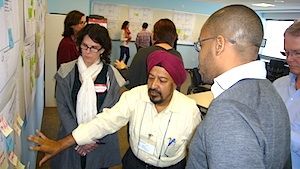How to Find Career Longevity in a World of Temporary Work
by Tim Clark and Bruce Hazen “In the future, everyone will be either a temp or an entrepreneur.” So writes James Altucher in Choose Yourself. Altucher is referring to the trend that has many organizations around the world quickly replacing full-time “permanent” positions with part-time, contract, or temporary workers. The trend has been growing for more than a decade and will likely continue. You might call it a global shift from traditional full-time employment to “permalancing.” How can you find career longevity in a world of temporary work? It helps to recognize two things. First, in an increasingly temporary work world, loyalty to specific organizations and job titles makes less and less sense. At the same time, loyalty to a profession makes more and more sense. Loyalty to a profession means forging a strong professional identity. Professional identity means your persistent, distinguishing character as a worker that transcends any organizational affiliation or job title. A clear professional identity focuses your skill-building efforts and reinforces your understanding that work “lives” everywhere in the career universe — it’s not confined to certain organizations or functional sectors (it's not always defined and packaged in the form of a “job” either). To strengthen your professional identity, refine the Value Proposition in your personal business model. A second way to achieve career longevity is to improve your professional skills. Simple economics tells us that relatively rare skills are needed to win relatively desirable work. And one skill that remains rare is the ability to understand, describe, and help modify business models — both at the enterprise and personal level. Why? Because most workers concern themselves primarily with doing their specific jobs well. They lack interest in — and understanding of [...]



